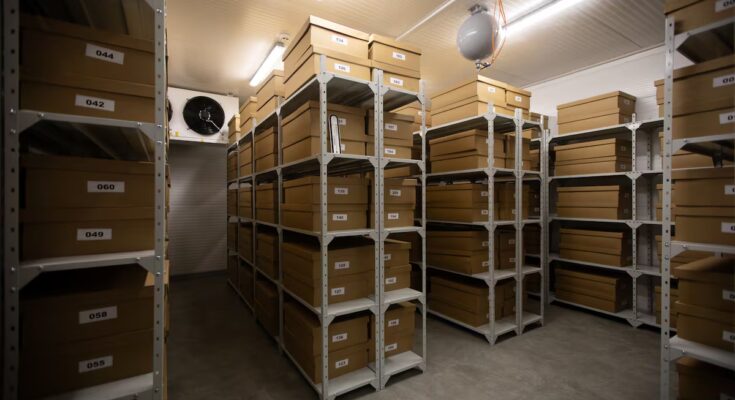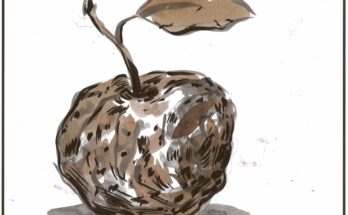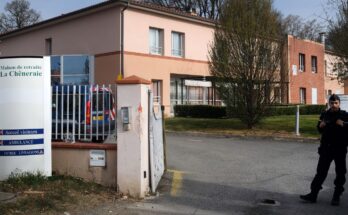Name: Triticum aestivum L. (durum wheat). Passport: UA0107997. Airtight bag: 17. Box: 341. Location: 38.4 square meter room between -18º and -20º. Several seeds of this cereal and 51,003 other varieties of barley, chickpeas, fodder and sunflowers are already stored in the recently opened Duplicate Center for Plant Genetic Resources of Ukraine in the west of the country. A palm-wide door opens the frozen installation that houses the seeds that could one day play a fundamental role in the event of drought, plagues, floods or many disasters that devastate the earth and therefore the food of people and animals.
“Ukraine has an immense collection of biodiversity that cannot be found anywhere else. Who knows how useful it will be to us in the future. You can still explore its qualities, it’s like a treasure,” says the Crop Trust’s chief scientist, Luigi Guarino, after witnessing the long-awaited opening of the center this November in a location that cannot be revealed publicly for security reasons.
The sky now appears clear above the seeds, but it has not always been clear. In early 2022, Russian bombs hit the territory of the National Seed Bank of Ukraine, in Kharkiv (in the east), and the vast and genuine plant wealth of the so-called breadbasket of Europe came under terrifying threat. So, a team of scientists, technicians and their families risked their lives to secretly set aside a handful of each of the varieties stored in Kharkiv in sachets for a year. The plan was to transport the duplicate in a refrigerated truck to a safe area. The mission was accomplished. In March 2023 they were transported to a temporary warehouse while this new center was built. Now they celebrate being in a permanent location, financed with European funds and the Food and Agriculture Organization of the United Nations (FAO).
The protagonists of the enterprise show up decorated for the inauguration. They get on the bus to the event early, eager to get into the huge freezer where they can stay for a very short time before their fingers turn to stone from the cold. They enjoy a day of glory in the unbearable daily life of souls lost in war, to whom homage is paid every morning at nine. Suddenly, the driver stops the vehicle and takes to the road. He and the passengers stand up and bow their heads. Through the window you can see a line of drivers repeating the gesture. The road comes to a complete stop and now the scene freezes during a resounding minute of silence. Then they continue with life.
“I’m not happy, but I’m not bad. We are very happy today, it’s good news for us and for the world,” shares Viktor Riabchun, 74, director of the National Seed Bank of Ukraine since 1991, when his country became independent and established its headquarters in Kharkiv. He is aware that the undertaking begun three years ago now allows the planet to enjoy 51,004 powerful lifesavers. “The most drought-resistant winter wheat varieties we have are Odeska 16, Ukrainka 0264 and Ferugineum 1239. And others grow without herbicides due to the formation of dense stems,” explains Riabchun. The scientist had the task of paving the way for the installation after cutting, together with other colleagues, technicians and personalities, a bright green ribbon chosen with tenderness, as a tribute to plant life. Immediately, the pieces of this tape became the best memories of a date that seems historic.
In the past, seed banks have been the epicenter of geopolitical interests due to their very high value for food security. The Gestapo had a unit that collected seeds from the countries it passed through. And one of the guidelines of the Nazi invasion of Russia was to appropriate the germplasm bank in the then Leningrad that the Russian scientist Nikolai Vavilov (1887-1943) founded with expeditions around the world.
Kharkiv was actually a substation of this headquarters, which over the years has been enriched with the contributions of both wild and cultivated material from the Ukrainian population. Today, the inexorable climate change of extreme temperatures, erratic rainfall and rising sea levels that salinates rivers makes each of these nuggets even more valuable. In the DNA of each of them lies the solution to resist the unbearable heat, resist floods or germinate despite the saltiness.
“It is important that the population understands that plants provide not only food, but also oxygen, fuel and medicine. Climate change is proceeding too fast, so we need variety,” enthused Lise Lykke Steffensen, director of the Nordic Center for Genetic Resources NordGen when the war in Ukraine began, during her trip to the inauguration. She was one of the first to offer help to Riabchun when she saw how Kharkiv was falling apart and now they enthusiastically embrace the opening of the center, which includes laboratories and machines for freezing and drying seeds.
NordGen is an organization involved in the management of the universal gene bank, the Svalbard Seed Vault, located in Norway. It contains 1,378,238 varieties of 6,521 species from dozens of countries and FAO’s goal is for three times as many seeds from Ukraine to be deposited in this safe. There is already a precedent that reveals the extreme importance of this action: Svalbard returned its seeds to Syria in 2014 after Aleppo, where its genetic material was located, was destroyed.
“Our plan is to bring a copy of our unique varieties to Svalbard. We must protect future generations,” says Tetyana Zaugolnikova, FAO country project coordinator in Ukraine, jubilantly. For three years it has been engaged in this extraordinary operation, initially considered an emergency, with a priority equal to that of opening a water channel when the population remains without resources in the midst of a war catastrophe. When the seeds were moved west, they were classified as a development project, and the next step before the Ukrainian team travels to the North Pole is for the country to join the FAO International Treaty on Plant Genetic Resources when it gets approval from the Ukrainian Parliament.
Joining the treaty, which includes the European Union and 155 other countries (excluding Russia), would add Ukrainian samples to the more than two and a half million already hosted by its global seed system, which they too could access; It would grant international recognition to Ukrainian plant genetic resources and grant them legal protection. “It also involves greater scientific and technical cooperation, the harmonization of standards in the EU and internationally and access to training programmes, technical assistance and funding,” explains Elly Barrett, FAO’s technical manager, who confesses to having experienced a milestone. “The seeds could have been lost, as happened in Sudan,” he illustrates, showing on his phone a photo of the bags scattered by the Rapid Support Forces in the Center for the Conservation and Research of Genetic Resources of Agricultural Plants in the African country. However, in February, Sudan managed to deposit 19 species on Svalbard, including sorghum, which has been cultivated in the region for millennia.
Last year the Union of Agricultural Labor Committees (UAWC) deposited some seed samples from Palestine in Svalbard, but the organization reported that its facilities had been attacked by Israeli forces in Hebron. “When the Treaty and the Crop Trust thought about strengthening reserves in emergency situations, they thought about measures to withstand floods or storms, pest or pathogen outbreaks, but we did not foresee conflicts of this magnitude,” Barrett adds.
Now the Crop Trust foundation is working on an early warning system to have maximum foresight in the face of all types of disasters and to start acting before it is too late. But peace is urgent. There are some seeds that cannot be stored in the chambers (ex situ) and are preserved in living plants on earth (on site). It is important for them that the land is not contaminated with explosives, as happens with crops in eastern Ukraine, or blown up with aerial dynamite. No plane flies in this country, the sky is reserved for thunderous war, but in the meantime the roots of a life in harmony are silently built from the earth.



